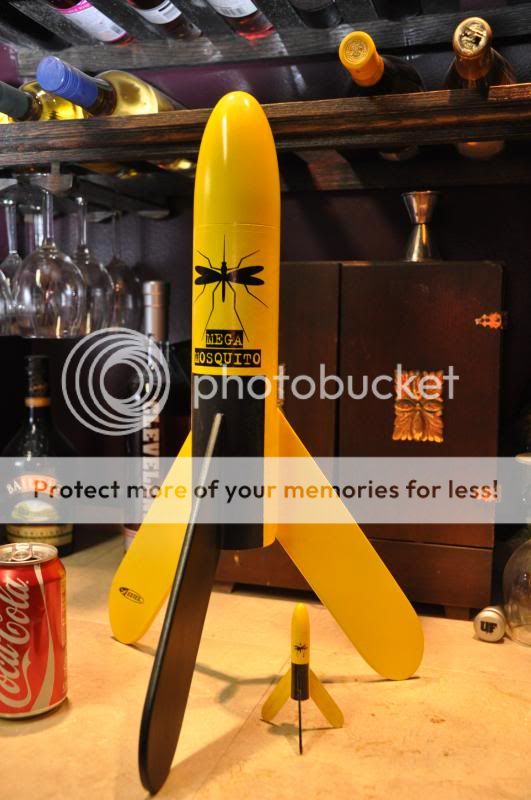Kirk G
Well-Known Member
- Joined
- Jan 9, 2012
- Messages
- 1,326
- Reaction score
- 1
So, I'm assembling my Mega Mosquito, and after piecing together the teeny-tiny mosquito and painting it, I'm tackling the big brother and discovering that it's another kettle of fish.
First, the length of the engine tube is too long by a quarter of an inch. Is the distance between the engine mount rings critical for mating on either end of the slotted fins? I'm beginning to think so, though it's not stated in the multi-lingual directions...
I have started punching out the lazer cut fins, and it's easy...so easy, I'm beginning to wonder about the instructions. The nine sheets of balsa wood fins are smooth and not rough...but the instructions show to block sand them...on the surfaces, both sides. So I do this, producing a little dust, but making no significant change in the smooth sheet of wood.
Now, I could understand sanding of the little stubs of connective points left over by the lazer cuts. But there is no instruction to do this. Nor feather them.
As I prepare to glue the fin sandwich together, I'm supposed to place them under weight while they dry or soak in. How to keep the layers in the right position? What is to keep them from sliding apart, producing a "messy sandwich" of uneven layers? Now the inner hollow layer is not quite the same size as the outer fin. There's about an 1/8" difference, which you can position either at the fin tip, or shove it down by the fin's slot end. I would assume, since the slot is inside the tube and somewhat in between the engine mounts, that's the end that is least important to be lined up. Now, the fins must be tightly mounted and glued to the body of the tube, but is it essential that all layers of the fin line up?
First, the length of the engine tube is too long by a quarter of an inch. Is the distance between the engine mount rings critical for mating on either end of the slotted fins? I'm beginning to think so, though it's not stated in the multi-lingual directions...
I have started punching out the lazer cut fins, and it's easy...so easy, I'm beginning to wonder about the instructions. The nine sheets of balsa wood fins are smooth and not rough...but the instructions show to block sand them...on the surfaces, both sides. So I do this, producing a little dust, but making no significant change in the smooth sheet of wood.
Now, I could understand sanding of the little stubs of connective points left over by the lazer cuts. But there is no instruction to do this. Nor feather them.
As I prepare to glue the fin sandwich together, I'm supposed to place them under weight while they dry or soak in. How to keep the layers in the right position? What is to keep them from sliding apart, producing a "messy sandwich" of uneven layers? Now the inner hollow layer is not quite the same size as the outer fin. There's about an 1/8" difference, which you can position either at the fin tip, or shove it down by the fin's slot end. I would assume, since the slot is inside the tube and somewhat in between the engine mounts, that's the end that is least important to be lined up. Now, the fins must be tightly mounted and glued to the body of the tube, but is it essential that all layers of the fin line up?
Last edited:







